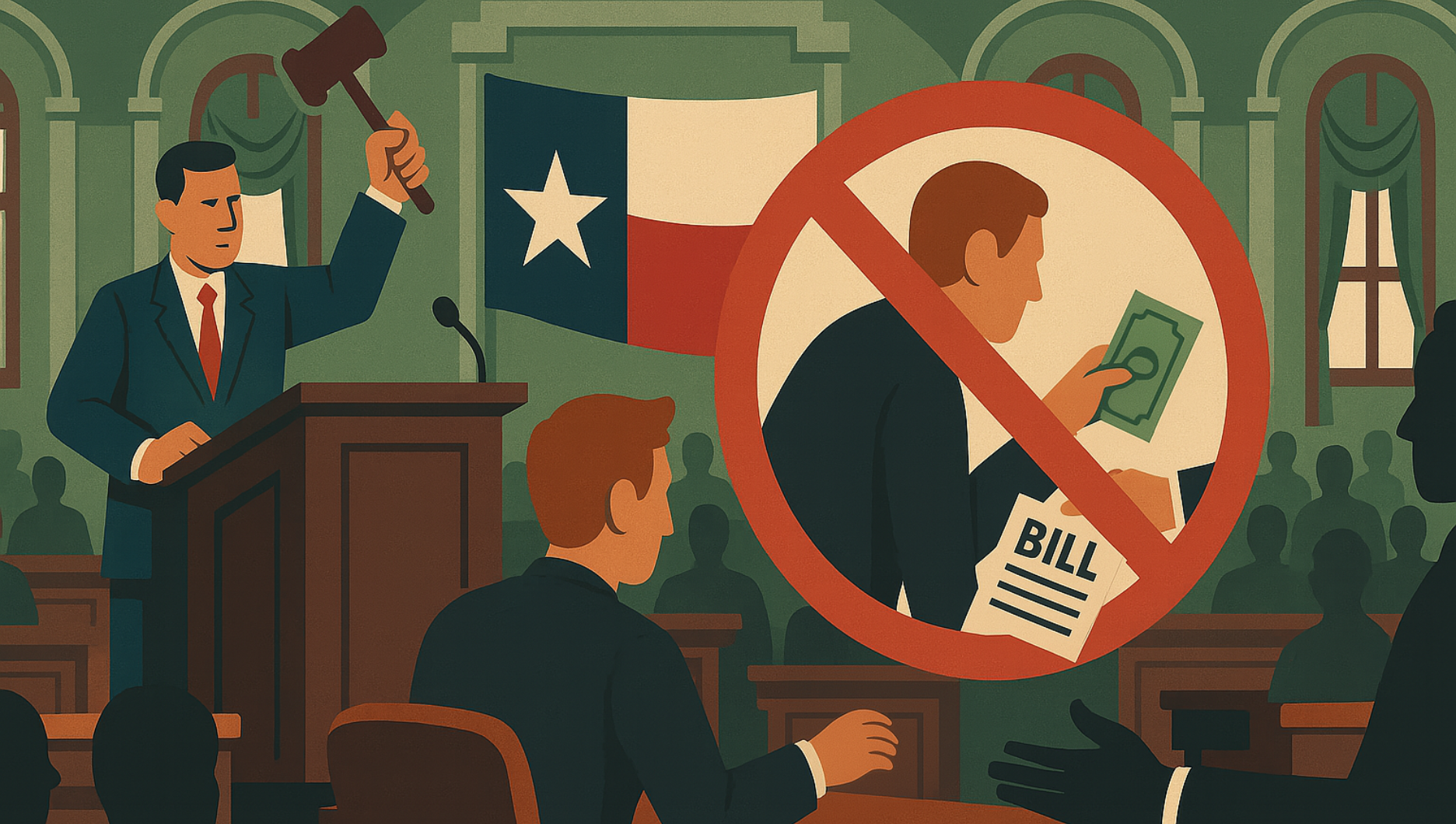Introduction
The Texas Constitution contains two limits on state government spending. One of them is a balanced budget amendment, known as the Pay-As-You-Go Limit. Because of this, Texas cannot use deficit spending to support most state expenditures. While this is very good, it usually does not put an adequate break on state spending growth because state revenue increases on average by over 5 percent annually.
To address this, in 1978, Texas voters approved including a Tax Spending Limit in the Texas Constitution. It prohibits spending non-constitutionally dedicated funds faster than the “estimated rate of growth of the state’s economy.” While imperfect, it still would be the best restriction on Texas government spending, except for one thing: the Texas Legislature manipulates the numbers to skirt the limit and spend more taxpayer money.
Figure 1, from the Texas Legislative Budget Board (LBB), shows the remaining spending allowed in the House version of Senate Bill 1 under each of the two limits. According to the LBB, legislative appropriations this session in House Bill 500 (the supplemental appropriations bill) and Senate Bill 1 (the appropriations bill for 2026-27) fall $3 billion below the Tax Spending Limit. However, if spending in HB 500 and SB 1 were honestly accounted for, the Legislature would exceed the Tax Spending Limit by at least $7.6 billion.
The Problem with House Bill 500
The Texas Legislature is on track to appropriate $19.5 billion of general revenue funds in HB 500. In a memorandum, the LBB explains how these funds will be accounted for in determining the Texas Spending Limit for 2026-27:
For the spending limit calculations, items appropriated in House Bill 500 count towards the year in which they are appropriated, which is fiscal year 2025. As such, all fiscal year 2025 appropriations would be considered when calculating 2024-25 spending levels to determine the 2026-27 spending limits
The problem with the LBB’s methodology is that a significant amount of the HB 500 funds it is counting as part of the 2024-25 baseline will be spent in either 2026 or 2027. HB 500 appropriates $19.5 billion from the state’s general revenue fund that can be spent during “the two-year period beginning on the effective date of this Act.” Assuming the effective date will be June 1, these funds may be spent up to May 31, 2027, until almost the end of the 2026-27 biennium. Yet the LBB has said it is counting the funds for the 2024-25 baseline.
The funds are new spending for the upcoming 2026-27 biennium. This violates the spirit and the plain meaning of the Texas Constitution’s Tax Spending Limit:
The rate of growth of appropriations in a state fiscal biennium from state tax revenues not dedicated by the constitution may not exceed the estimated rate of growth of the state’s economy.
Not all of the spending in HB 500 may take place in 2026 or 2027, and some of it is financed out of taxes dedicated by the state constitution. But the next section shows how the Legislature is using HB 500 to manipulate and exceed the Tax Spending Limit.
Exceeding the Tax Spending Limit
In the November 15, 2024 issue of the Texas Register, the LBB wrote, “The amount of appropriations from state tax revenue that are not dedicated by the constitution in the 2024-25 biennium [is estimated] to be $110,262,478,661.” Multiplying this by the LBB’s adopted growth rate of 8.93 percent gives us a 2026-27 Tax Spending Limit of $120.1 billion. Yet in its summary of SB 1 dated March 31, the LBB said that the Tax Spending Limit is $123.2 billion. This is an increase of $3.1 billion from November. This means that including funds that can be spent in 2026-27 but that the LBB is counting as part of the 2024-25 baseline has increased the Tax Spending Limit by $3.1 billion. Without this sleight of hand, the Legislature would be exceeding the Tax Spending Limit by about $100,000.
This is just the beginning, though. The Texas Legislature uses another trick to significantly exceed the Texas Spending Limit. In 2023, the Legislature created both the Texas Energy Fund and the Texas Water Fund through a constitutional amendment. It allowed itself to appropriate money into both funds in the future without further voter input. Additionally, it declared that “money in the Texas energy fund [and the Texas water fund] is dedicated by this constitution.”
This session, the Legislature is planning to appropriate $5 billion into the Energy Fund (SB 1) and $2.5 billion into the Water Fund (HB 500). These funds immediately become constitutionally dedicated and, therefore, do not count towards the Tax Spending Limit. No voter approval or special legislative vote is needed to make this happen. Without these sleights of hand, the Texas Legislature would be at least $7.6 billion over the Tax Spending Limit.
Conclusion
To stop this abuse of Texas taxpayers, the Legislature must change the way these funds are accounted for and give the Texas Comptroller oversight of the Tax Spending Limit. Leaving it in the hands of the Legislative Budget Board is like letting the fox guard the henhouse.
Texans for Fiscal Responsibility relies on the support of private donors across the Lone Star State in order to promote fiscal responsibility and pro-taxpayer government in Texas. Please consider supporting our efforts! Thank you!
Get The Fiscal Note, our free weekly roll-up on all the current events that could impact your wallet. Subscribe today!




